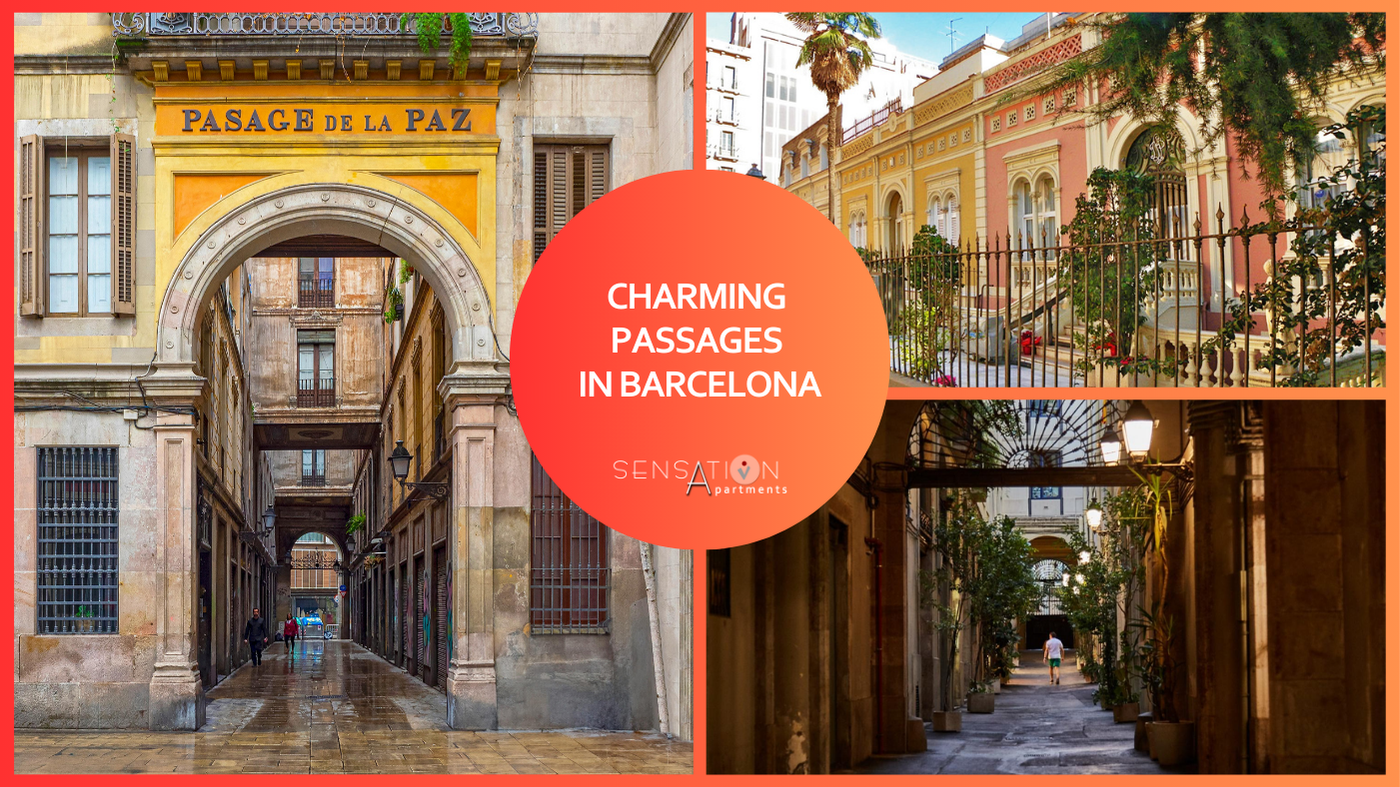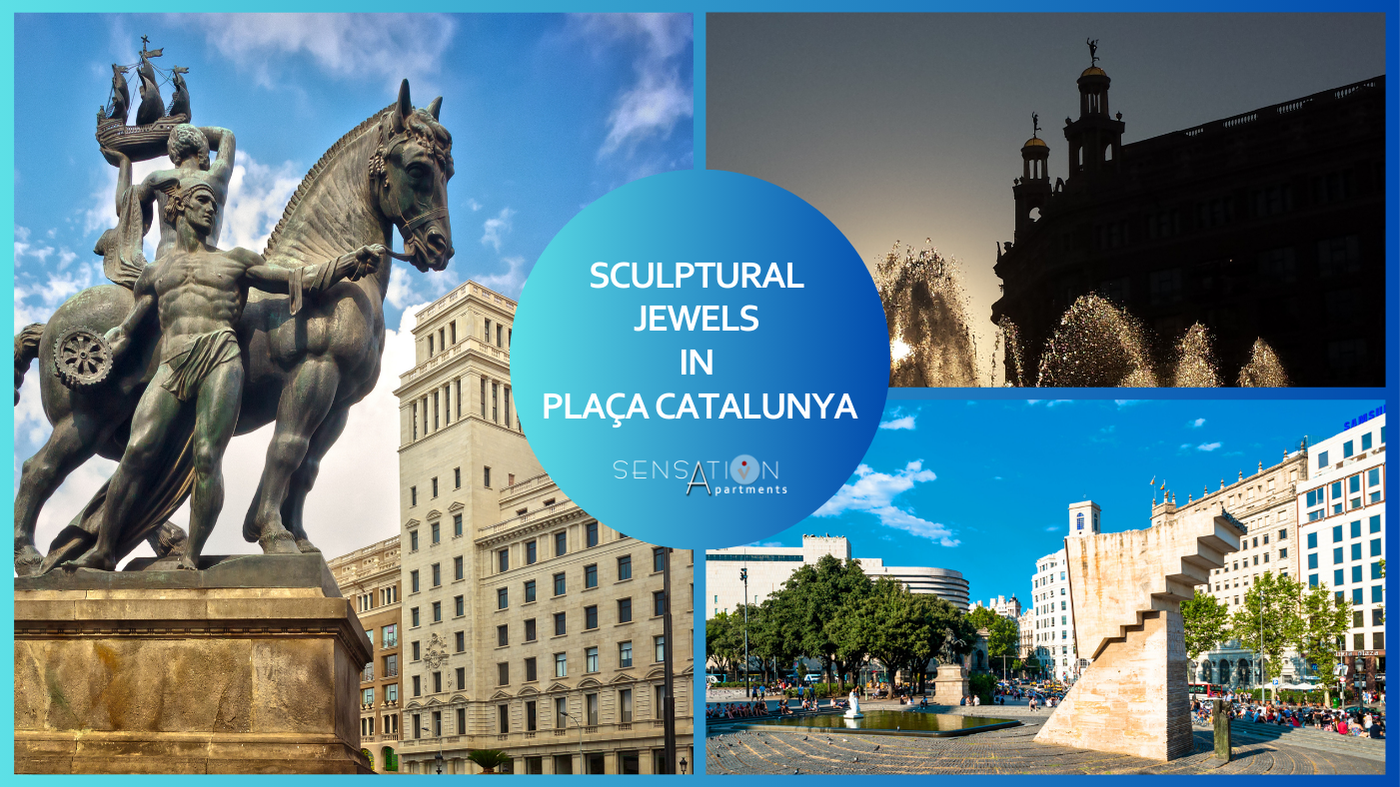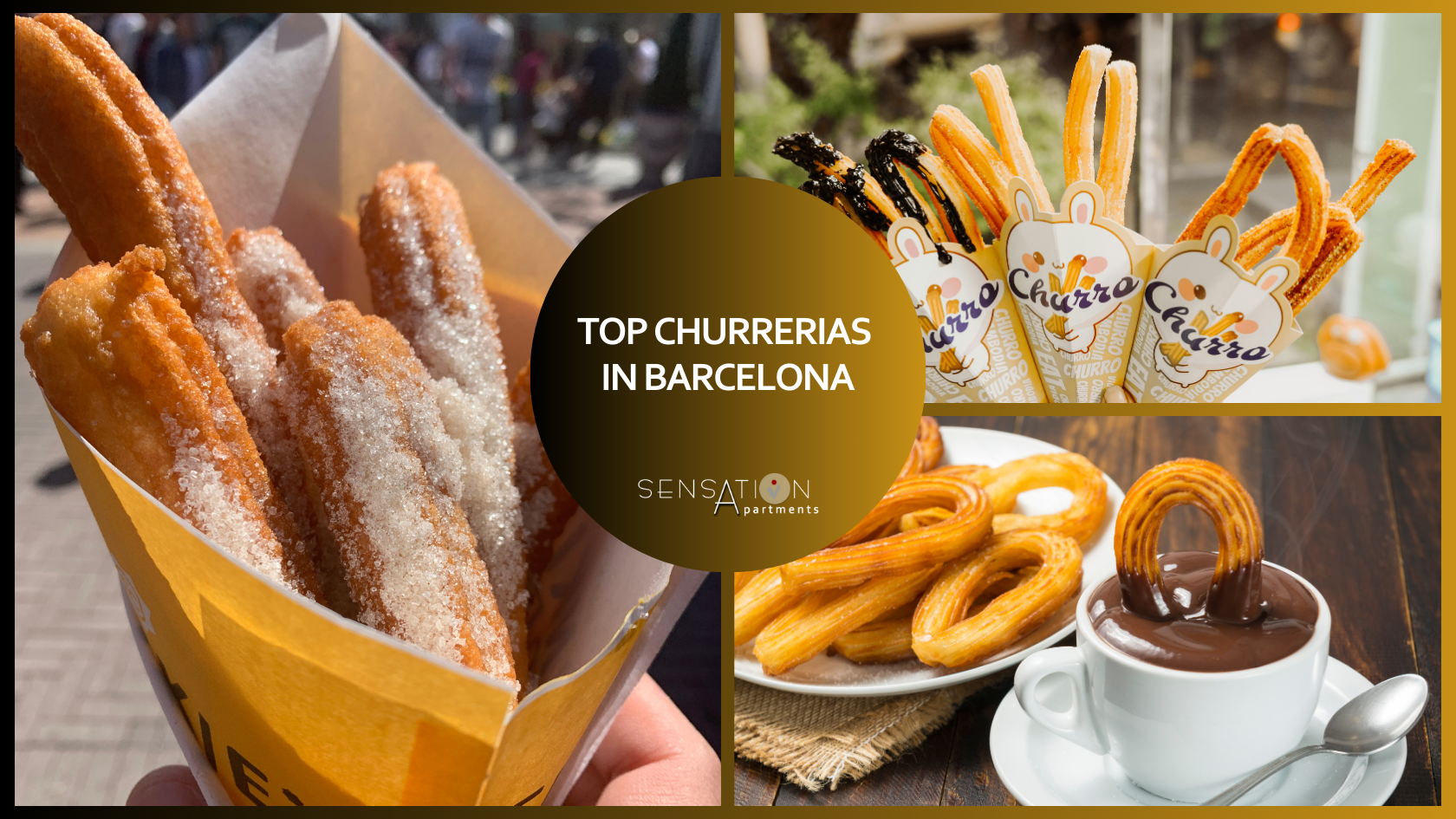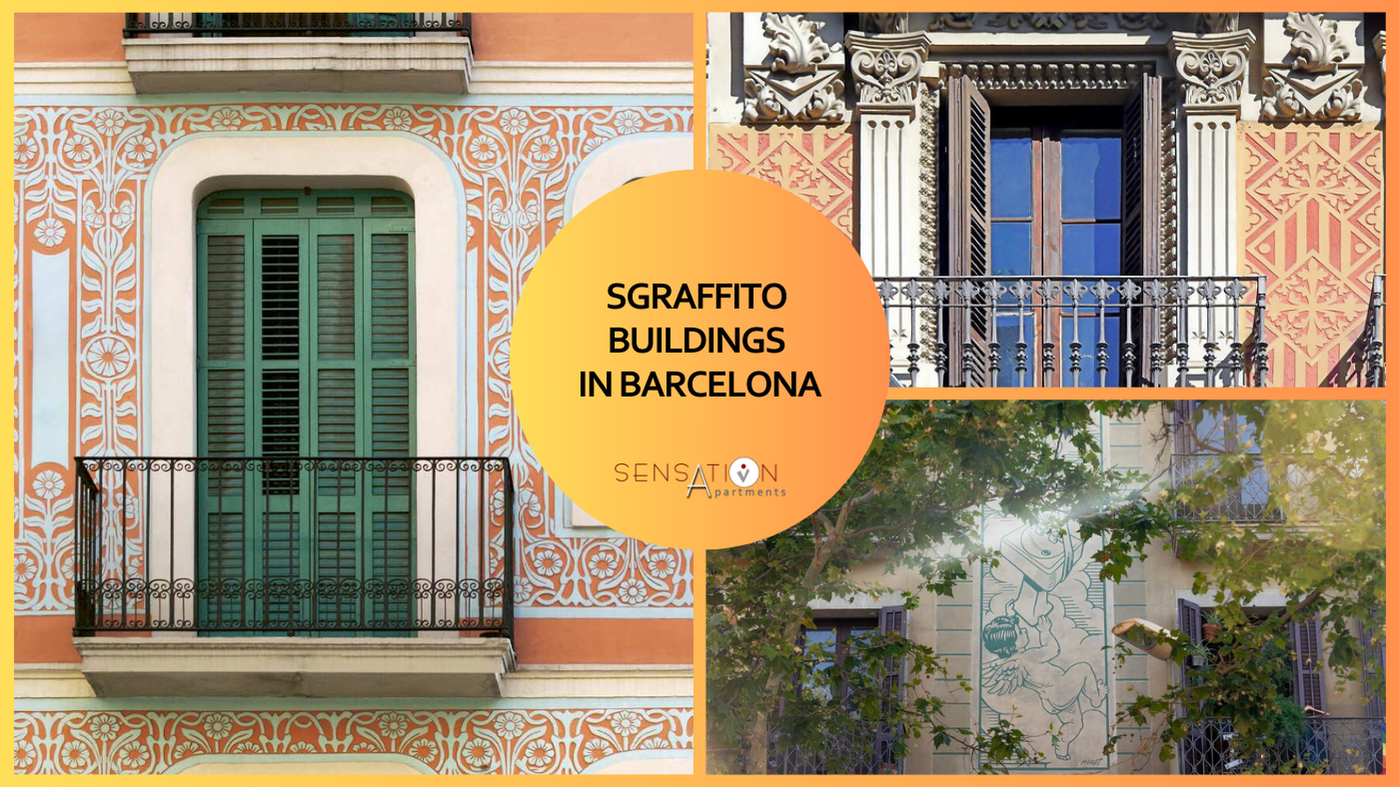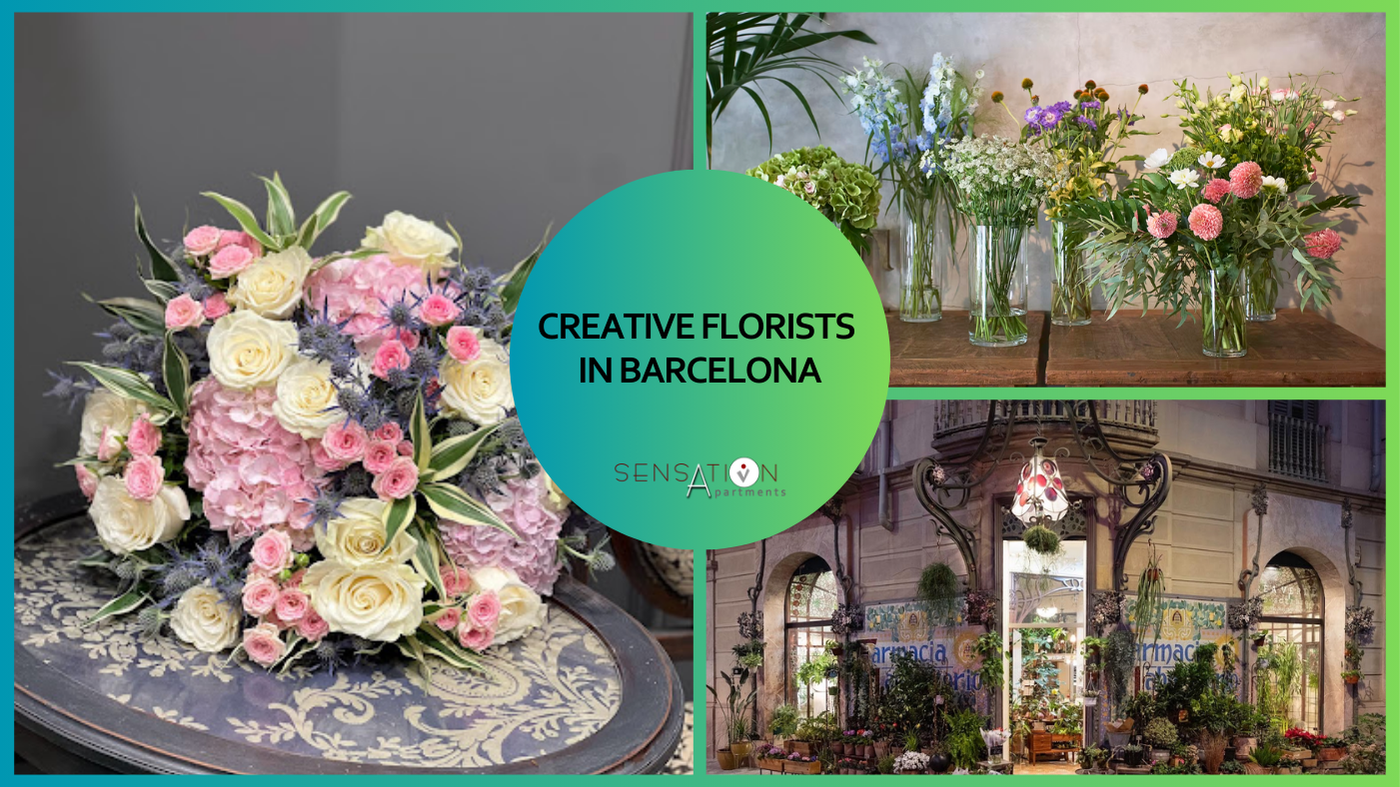Charming passages in Barcelona
Routes 19/02/2025
Barcelona is a city full of magical corners, where history and modernity intertwine in every street. Among its many hidden treasures, the passages are small oases of tranquility and beauty that transport you to another era. In this article, we take you to discover some of the most beautiful and historic passages in the city, perfect for a relaxed stroll away from the tourist bustle.
Passage of La Pau
This passage is located in the heart of the Gothic Quarter and is one of the most representative in the area. Its fame comes from the spelling mistake found in the signage of the place, where "Pasage" appears instead of "Pasaje". Although it is small, its 19th-century architecture and its calm atmosphere make it a picturesque place. In addition, it houses the studio of the Miralles-Tagliabue architects, responsible for the design of the Pavilion of the Universal Exposition of 2000, and the Chalet del Moro, a well-known brothel in the city at the beginning of the 20th century. This passage is an excellent example of Barcelona's ability to fuse the old with the modern.
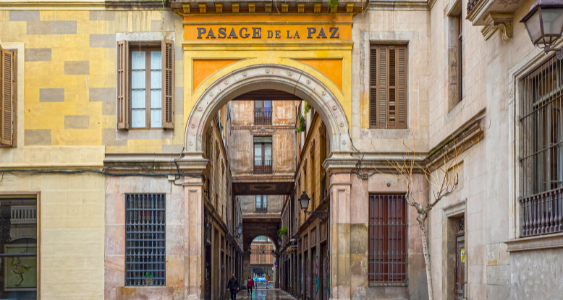
Credit Passage
The Passatge del Crèdit was opened between 1875 and 1879 on the land previously occupied by the Convent of La Enseñanza. Apart from being famous for its iron and glass architecture, it stands out for its historical importance, as Joan Miró was born in this passage in 1893 and spent his early years there. In fact, room 330 of the Hotel Rialto with an entrance on Carrer Ferran is today what was the artist's birthplace.
Banking Passage
This passage connects La Rambla with Plaza del Pi and is located in the heart of Barcelona's Gothic Quarter. It was created to provide access to the headquarters of important banking entities in the 19th century. The architecture of the place stands out for its neoclassical touch, and in its surroundings there are important buildings of the period that reflect the strength of the financial sector in Barcelona at that time. Framed between the two identical buildings that lead to the passage, you can see a small palace from 1873 that was built as the headquarters of a banking entity and that a century later became the Wax Museum.
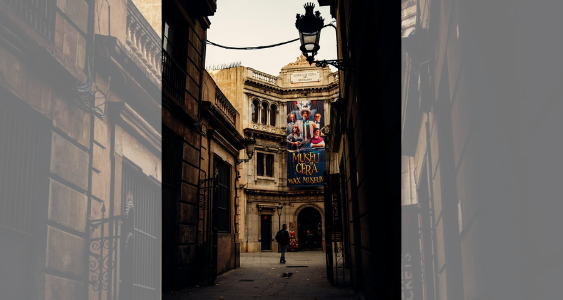
Bacardi Passage
This passage, designed by architect Francesc Daniel Molina, was the first covered passage in the city. It was built between 1850 and 1859 and connects the Rambla with the Plaza Real. Originally, the passage was part of the land of the Capuchin convent, which was destroyed in 1836. It owes its name to the surname of the family that owned the land. Its innovative design, combining the use of iron and glass, makes it one of the most prominent passages in the city. The iron bridge that crosses it is one of its most striking features. In addition, the architecture of this passage symbolises the modernisation of Barcelona during the 19th century, especially with regard to commercial and transit structures.
Permanent Passage
Opened in 1864, Passatge Permanyer is one of the oldest in the Eixample and is particularly well preserved. Its design was the work of Jeroni Granell, and its London-inspired buildings combine classical, Arabic and noucentista styles, making it a unique place. This passage was designed to be an area for upper-class housing, with houses featuring architectural details such as wrought iron balconies, mosaics and decorative tiles. The original cobblestones of the street add a rustic touch that gives an air of elegance and nostalgia to the area.
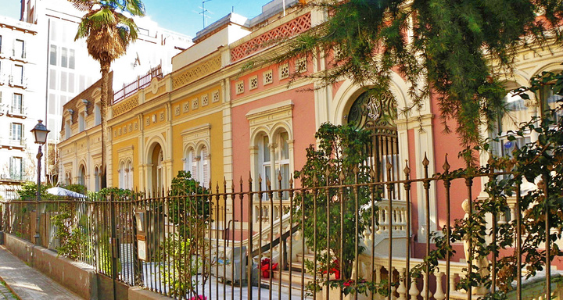
Cases del Passatge Permanyer - Jordi Domènech (2011) . Via Wikimedia Commons (CC BY-SA 3.0)
Mercader Passage
The Passatge Mercader is located on the corner of Carrer Provenza and was opened at the beginning of the 20th century. For years, it housed the Miria cinema, one of the first cinemas in Barcelona, which closed in 1962. The passage retains a distinguished atmosphere, with English-style houses and details such as orange trees on the street. The tranquility of this passage contrasts with the bustle of the large avenues nearby, making it an oasis in the middle of the city. Along the passage, you can see some traditional shops and businesses, which gives it a picturesque touch.
Passage of the Manufacturers
This passage, opened in 1878, connects the Eixample and Ciutat Vella and has been recently restored by Yurbban Hotels when it acquired the building that housed it. The passage is a clear example of the urban evolution of Barcelona, as it shows the transition between industrial Barcelona and the modern expansion. The four-metre difference in height between both neighbourhoods is one of the characteristics that most distinguishes it. During its restoration, architectural details such as the grand staircase and the coffered ceiling have been maintained, which give the place a historic air. This is a must-see passage for those who wish to learn about the history of the city in a more intimate way.
![]()
Passage of Lluís Pellicer
This passage is known for being a gastronomic meeting point, with outstanding bars and restaurants such as Bar Velódromo and Bun Sichi, which was one of the first Japanese restaurants in Barcelona. Along its 100 meters, the passage has become an essential place for food lovers. In addition, the Association of Friends of the Passatge works actively to preserve its identity and promote activities that keep the spirit of the place alive. The passage is ideal for enjoying a quiet walk while exploring its different culinary proposals.
Passage of Sert
The Passatge de Sert was built in 1867 to house the tapestry production of the Sert family, known for their relationship with the modernist painter and architect. This passage is a place with a special charm, which has been restored over the years to maintain its character. Today it houses art galleries and design studios. Its industrial architecture, soft lighting, and vegetation on the facades and balconies contribute to its unique and very photogenic aesthetic. For the more curious, the passage offers an illustration on the gate that shows what the factory complex looked like in the past.
![]()
Passage Tubella
The Passatge Tubella, opened in 1925, is a passage of low houses with a garden in front, located in the Les Corts neighbourhood. It is a representative example of the passages in the area, created to house workers from nearby industries. Although there were originally 22 houses, 18 of them survive today, all with the same structure and polychrome façade. Only one modern block of flats breaks the uniformity of the whole. This passage is very quiet and offers a relaxed atmosphere, ideal for walking and enjoying the surroundings.
If you are looking for places with history, tranquillity and a touch of romance in Barcelona, these passages will win you over. On your next stay at Sensation Apartments, we invite you to lose yourself in these magical corners and discover the most authentic Barcelona.
Passage of La Pau
This passage is located in the heart of the Gothic Quarter and is one of the most representative in the area. Its fame comes from the spelling mistake found in the signage of the place, where "Pasage" appears instead of "Pasaje". Although it is small, its 19th-century architecture and its calm atmosphere make it a picturesque place. In addition, it houses the studio of the Miralles-Tagliabue architects, responsible for the design of the Pavilion of the Universal Exposition of 2000, and the Chalet del Moro, a well-known brothel in the city at the beginning of the 20th century. This passage is an excellent example of Barcelona's ability to fuse the old with the modern.

Credit Passage
The Passatge del Crèdit was opened between 1875 and 1879 on the land previously occupied by the Convent of La Enseñanza. Apart from being famous for its iron and glass architecture, it stands out for its historical importance, as Joan Miró was born in this passage in 1893 and spent his early years there. In fact, room 330 of the Hotel Rialto with an entrance on Carrer Ferran is today what was the artist's birthplace.
Banking Passage
This passage connects La Rambla with Plaza del Pi and is located in the heart of Barcelona's Gothic Quarter. It was created to provide access to the headquarters of important banking entities in the 19th century. The architecture of the place stands out for its neoclassical touch, and in its surroundings there are important buildings of the period that reflect the strength of the financial sector in Barcelona at that time. Framed between the two identical buildings that lead to the passage, you can see a small palace from 1873 that was built as the headquarters of a banking entity and that a century later became the Wax Museum.

Bacardi Passage
This passage, designed by architect Francesc Daniel Molina, was the first covered passage in the city. It was built between 1850 and 1859 and connects the Rambla with the Plaza Real. Originally, the passage was part of the land of the Capuchin convent, which was destroyed in 1836. It owes its name to the surname of the family that owned the land. Its innovative design, combining the use of iron and glass, makes it one of the most prominent passages in the city. The iron bridge that crosses it is one of its most striking features. In addition, the architecture of this passage symbolises the modernisation of Barcelona during the 19th century, especially with regard to commercial and transit structures.
Permanent Passage
Opened in 1864, Passatge Permanyer is one of the oldest in the Eixample and is particularly well preserved. Its design was the work of Jeroni Granell, and its London-inspired buildings combine classical, Arabic and noucentista styles, making it a unique place. This passage was designed to be an area for upper-class housing, with houses featuring architectural details such as wrought iron balconies, mosaics and decorative tiles. The original cobblestones of the street add a rustic touch that gives an air of elegance and nostalgia to the area.

Mercader Passage
The Passatge Mercader is located on the corner of Carrer Provenza and was opened at the beginning of the 20th century. For years, it housed the Miria cinema, one of the first cinemas in Barcelona, which closed in 1962. The passage retains a distinguished atmosphere, with English-style houses and details such as orange trees on the street. The tranquility of this passage contrasts with the bustle of the large avenues nearby, making it an oasis in the middle of the city. Along the passage, you can see some traditional shops and businesses, which gives it a picturesque touch.
Passage of the Manufacturers
This passage, opened in 1878, connects the Eixample and Ciutat Vella and has been recently restored by Yurbban Hotels when it acquired the building that housed it. The passage is a clear example of the urban evolution of Barcelona, as it shows the transition between industrial Barcelona and the modern expansion. The four-metre difference in height between both neighbourhoods is one of the characteristics that most distinguishes it. During its restoration, architectural details such as the grand staircase and the coffered ceiling have been maintained, which give the place a historic air. This is a must-see passage for those who wish to learn about the history of the city in a more intimate way.
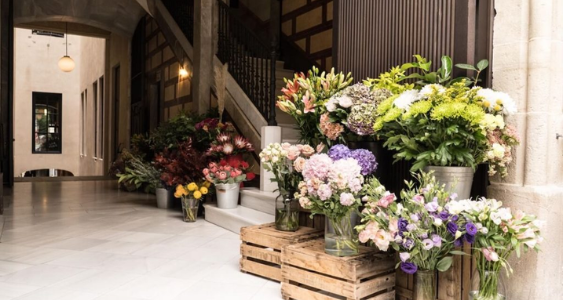
Passage of Lluís Pellicer
This passage is known for being a gastronomic meeting point, with outstanding bars and restaurants such as Bar Velódromo and Bun Sichi, which was one of the first Japanese restaurants in Barcelona. Along its 100 meters, the passage has become an essential place for food lovers. In addition, the Association of Friends of the Passatge works actively to preserve its identity and promote activities that keep the spirit of the place alive. The passage is ideal for enjoying a quiet walk while exploring its different culinary proposals.
Passage of Sert
The Passatge de Sert was built in 1867 to house the tapestry production of the Sert family, known for their relationship with the modernist painter and architect. This passage is a place with a special charm, which has been restored over the years to maintain its character. Today it houses art galleries and design studios. Its industrial architecture, soft lighting, and vegetation on the facades and balconies contribute to its unique and very photogenic aesthetic. For the more curious, the passage offers an illustration on the gate that shows what the factory complex looked like in the past.
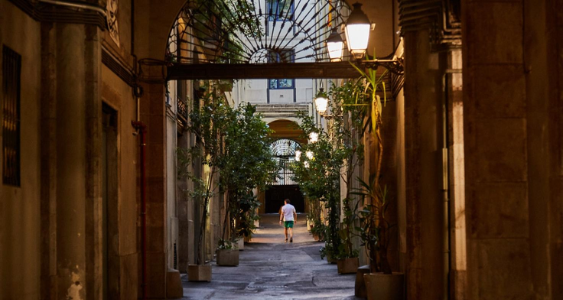
Passage Tubella
The Passatge Tubella, opened in 1925, is a passage of low houses with a garden in front, located in the Les Corts neighbourhood. It is a representative example of the passages in the area, created to house workers from nearby industries. Although there were originally 22 houses, 18 of them survive today, all with the same structure and polychrome façade. Only one modern block of flats breaks the uniformity of the whole. This passage is very quiet and offers a relaxed atmosphere, ideal for walking and enjoying the surroundings.
If you are looking for places with history, tranquillity and a touch of romance in Barcelona, these passages will win you over. On your next stay at Sensation Apartments, we invite you to lose yourself in these magical corners and discover the most authentic Barcelona.

